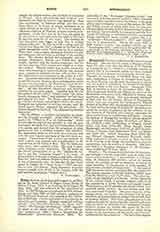

Königgratz, Diocese of (REGIME HRADECENSIS), In Bohemia. This see owes its origin to Emperor Ferdinand III, who, soon after the creation of the Diocese of Leitmeritz (q.v.), decided to establish another to replace that of Leitomischl, which had been founded in 1344 but had disappeared during the Hussite wars. Through the mediation of Cardinal Ernst von Harrach, Archbishop of Prague, he obtained from Countess Anna Eusebia von Harrach the domain of Chrast and the manor of Auietitz in the district of Chrudim, and gave them to the new diocese. Alexander VII’s Bull of erection is dated November 10, 1664; Matthat’s Ferdinand Zoubek von Bilenberg, abbot of the Benedictine monastery of St. Nikolaus at Prague, was appointed first bishop. The new diocese embraced at first only the old district (Kreis) of Koniggratz, which, however, included the subsequently formed district of Bydiow with the exception of two parishes. In 1784, during the reign of Joseph II, the diocese received its present boundaries by the addition of the two districts of Chrudim and Czaslau, separated for this purpose from the Archdiocese of Prague. Among the bishops of Koniggratz worthy of special mention are: Johannes Adamus, Count Wratislaw von Mitrovie (1710-21), later Archbishop of Prague; Joseph Adam von Arco (1776-80); Aloys Joseph, Count Krakovsky von Kolowrat (1812-30), d. 1833 as Archbishop of Prague; Karl Borromaus Hanl von Kirchtreu (1831-74). Joseph Johannes Hais (1875-92) and Eduard Johannes Nepomuk Brynych (1892-1902) performed valuable services by their devotion to the training of the clergy, the development of pious associations, and the erection of churches. The present bishop is Josephus Doubrava (b. February 29, 1852; consecrated June 29, 1903).
Statistics.—The diocese is divided into 32 vicariates, and includes 1 curatia canonicalis (cure of souls combined with jurisdiction), 2 provostships, 3 archdeaneries, 38 deaneries, 404 parishes served by secular priests, 16 parishes served by members of orders, 10 other benefices, 11 chaplaincies in noble families, 18 chaplaincies attached to foundations. At the close of 1909 the secular priests numbered 998, the regular 83. The diocese contains 1,476,942 Catholics, 50,037 non-Catholic Christians, and 11,372 Jews. The great majority of the inhabitants are Czechs. Of the vicariates 16 are entirely Czech, 3 entirely German, while in 13 the population is partly German and partly Czech. Three quarters of the parishes are wholly Czech, over one-fifth wholly German, the rest include both German and Czech Catholics. The great majority of the secular clergy are Czechs, who minister even in parishes that are purely German, owing to the notable lack of German priests. This latter phenomenon is to be explained partly by the fact that the Liberal tendencies long prevalent in Bohemia have influenced German students against the priestly life; partly by the material conditions of the German parishes, which, being mainly in the mountains and far apart, repel German candidates for the priesthood. The cathedral chapter consists of the dean, who is also vicar-general, 7 regular and 6 honorary canons; the episcopal consistory is composed of the dean and 9 councillors. The ecclesiastical educational institutions in the diocese are: a seminary for priests, founded in 1802 and connected with the theological institute (1909): 6 professors, 3 tutors, 75 students; a seminary for boys, opened in 1860, with at present 142 pupils; the gymnasium of the Benedictine Abbey of Braunau. The religious orders conduct 10 institutions for the education and training of girls; 7 boarding-schools for girls; two training colleges for female teachers, and 25 day nurseries and kindergartens.
At the close of 1909, the religious orders and congregations for men in the diocese were: Premonstratensians at Seelau, 18 priests and 6 clerics; Benedictines at Braunau, 40 priests; Jesuits, 3 fathers and 1 brother; Redemptorists, 8 priests and 7 brothers; Augustinians, 2 priests; Franciscans, 3 priests and 2 brothers; Capuchins, 2 monasteries with 5 priests and 4 brothers; Brothers of Mercy, 2 houses with 3 priests and 11 brothers; Piarists, 1 priest. At the same date the religious orders and congregations for women were: Ursulines, 3 convents with 98 sisters; Redemptorist Nuns, 3 sisters; Sisters of St. Francis, 13 convents with 187 sisters; Sisters of Notre-Dame, 26 houses with 143 sisters; Sisters of Mercy of St. Charles Borromeo, 7 convents with 40 sisters; Sisters of Mercy of the Holy Cross, 3 convents with 16 sisters; Sisters of the Most Holy Sacrament, 2 convents with 13 sisters; Sisters of St. Hedwig, 4 houses with 20 sisters. The diocese has many institutions for alleviating distress and suffering; also many well endowed charitable foundations. Special mention should be made of the diocesan Institute for the Deaf and Dumb (the Rudolphinum) at Koniggratz; the Asylum for the Poor at Kukus (founded in 1711); 60 hospitals and homes for the poor, and 10 orphan asylums, all of which are conducted as religious institutions. Religious orders care for the sick in 12 hospitals. The Society of St. Vincent de Paul has eight conferences in the diocese; the Catholic Workingmen’s Union and Journeymen’s Union have each a large membership. Widely extended also through the diocese are the Association of St. Joseph, Catholic parish and public libraries (about 110), etc. The most important ecclesiastical buildings in the diocese are the cathedral, a Gothic structure of the early part of the fourteenth century, restored in 1864; the Gothic church of St. Barbara at Kuttenberg, begun at the beginning of the fourteenth century and finished in 1451; the abbey church of Braunau, and the pilgrimage church of the Piarists on the Muttergottesberg near Grulich.
JOSEPH LINS

